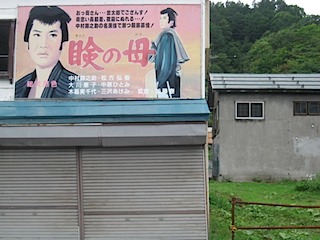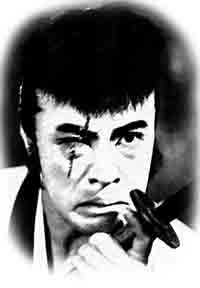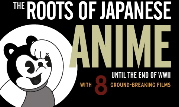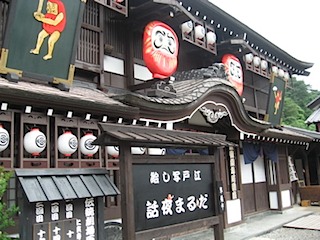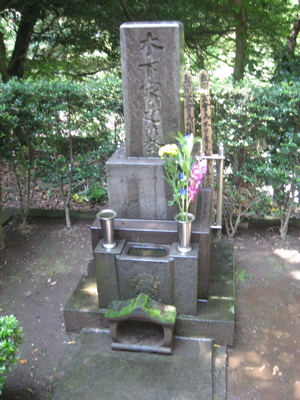Yubari: Coal, Cinema, Kitano, and Caramels
After toiling for several months with loads of work, including teaching my Yale Summer Session class and doing a final check on my next book, I finally got my first vacation in ages. I went up to Hokkaido to rejoin my family at my wife's family home near Sapporo.
One of the things we decided to do was to venture up to Yubari, which is about an hour and half away by train (if you are lucky: so few trains go to Yubari that some itineraries take three hours. Going by car or bus may be best in some cases). Those of us in the film world know Yubari through the Yubari International Fantastic Film Festival, a winter-time festival that has historically combined some foreign film biggies with a few Japanese indies.
But Yubari was first and foremost a coal mining town, so when the mines closed around 1990, the city faced a serious problem. It first tried to maintain itself through the high-class Yubari melons, but that was not enough. The film festival helped (a lot of towns in the late 1980s and early 1990s, like Yamagata, started film festivals as a way of sparking the local economy and culture--machiokoshi, as it is called in Japanese). But the city also took advantage of government funds and borrowed a lot to build museums, theme parks, and anything else it could to attract tourists. But they didn't come. The result was that in 2006, the city went virtually bankrupt, city services were slashed, many of the attractions were closed, and the Film Festival was cancelled (and revived the next year thanks to NPO support). To many in Japan, Yubari is now synonymous with local government excess and mismanagement.
So this was the town we were going to. Our main goals were to go to the Coal Museum and to check out some of the cinema attractions around town. The Coal Museum was actually quite good: the main museum brings you down underground to go through one of the actual mines from the Meiji era (you even get to wear a coal miner's helmet with a lamp!) and a nearby Lifestyle Museum gives a good sense of everyday life for miners from the Meiji to the Showa eras. But the fact is we were about the only ones there. When we visited the Fossil Museum - which actually has some beautiful ammonites on display - the man had to unlock the door, turn on the lights, put the narration in the CD player, all just for us.
We also wanted to check out the cinematic attractions in Yubari. The fact that Yubari in its heyday had 16 cinemas is possibly one factor behind Yubari's continued association with film, but clearly it has latched on to it as one way of surviving. For instance, one of the tourist sites (which we did not go to) is the location of Yamada Yoji's version of The Yellow Handkerchief of Happiness. Near the Coal Museum, they had some of the buildings used for Kita no zeronen, now transformed into a museum for Yoshinaga Sayuri.
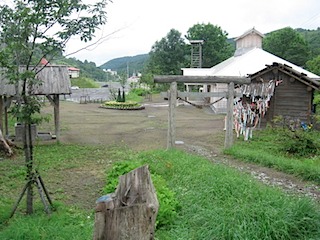
One of my interests was visiting the Yubari Kinema-kan that Markus Nornes and I listed in our Research Guide to Japanese Film Studies. It was typical, however, that the Kinema-kan no longer exists as it was (this is one of the unfortunate problems in publishing a guide like ours, and why we will keep on updating it). Now it has been subsumed by Hanabatake Bokujo, a company run by the actor Tanaka Yoshitake that made a big hit in Hokkaido and Japan with its fresh caramels. Yubari, it now seems, is betting its last chips on Hanabatake Bokujo, which has not only taken over part of the historical park where the Coal Museum is, but also runs the most prosperous business in town. The Kinema-kan is now only the "Cinema Gallery" inside Hanabatake Bokujo's "A Hill Desired of the Yubari" (forgive the horrible English - it is their creation), and not even featured on their web page. There's supposed to be a collection of 25,000 posters and other ephemera, which are now partially on display, but with the history presented there in the exhibits being so simplistic, and the people working there so ignorant of what is going on, it was somewhat of a waste of good material. The most interesting exhibit for me was a long case full of old prewar theater pamphlets, but there was little effort to explain them.
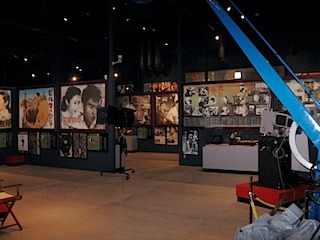
Technically, the Kita no zeronen exhibit is part of the same "Hill" complex, as is a room of stuff created by the TV tarento Tokoro Joji - including a figurine of Beat Takeshi (who has often appeared on TV with Tokoro) and a coffee cup for Kitano labeling him the "World's Most Violent" man. The best section was the Art Gallery, which is now featuring an exhibit of Kitano Takeshi's paintings, one labeled the biggest show Kitano has had so far. (Kitano and Tokoro both declared their desire to help Yubari by exhibiting their stuff.) There were some paintings from Hana-Bi (including the pointillist one), but my son noted with some disgust (he's that age) how many featured men's penises.
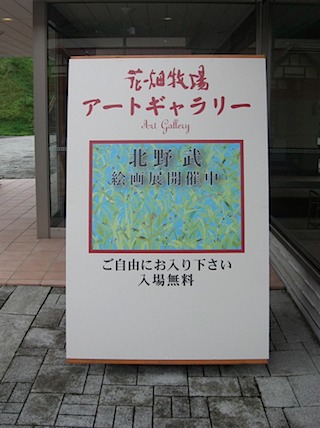
The last place we went was actually towards the center of town: the Yubari Kinema Kaido - their cinema street featuring regular buildings with bill billboards for old movies. That street appeared in Hou Hsiao-hsien's Millennium Mambo, but looked a lot better with all the snow. It can pique your historical interest (especially the old wooden buildings that were once used in Yellow Handkerchief), but now in the summer, with many of the businesses closed for good, it sort of became a sign of the decline of cinema itself.
It makes you wonder: does Yubari tell us that film is going the way of coal?
